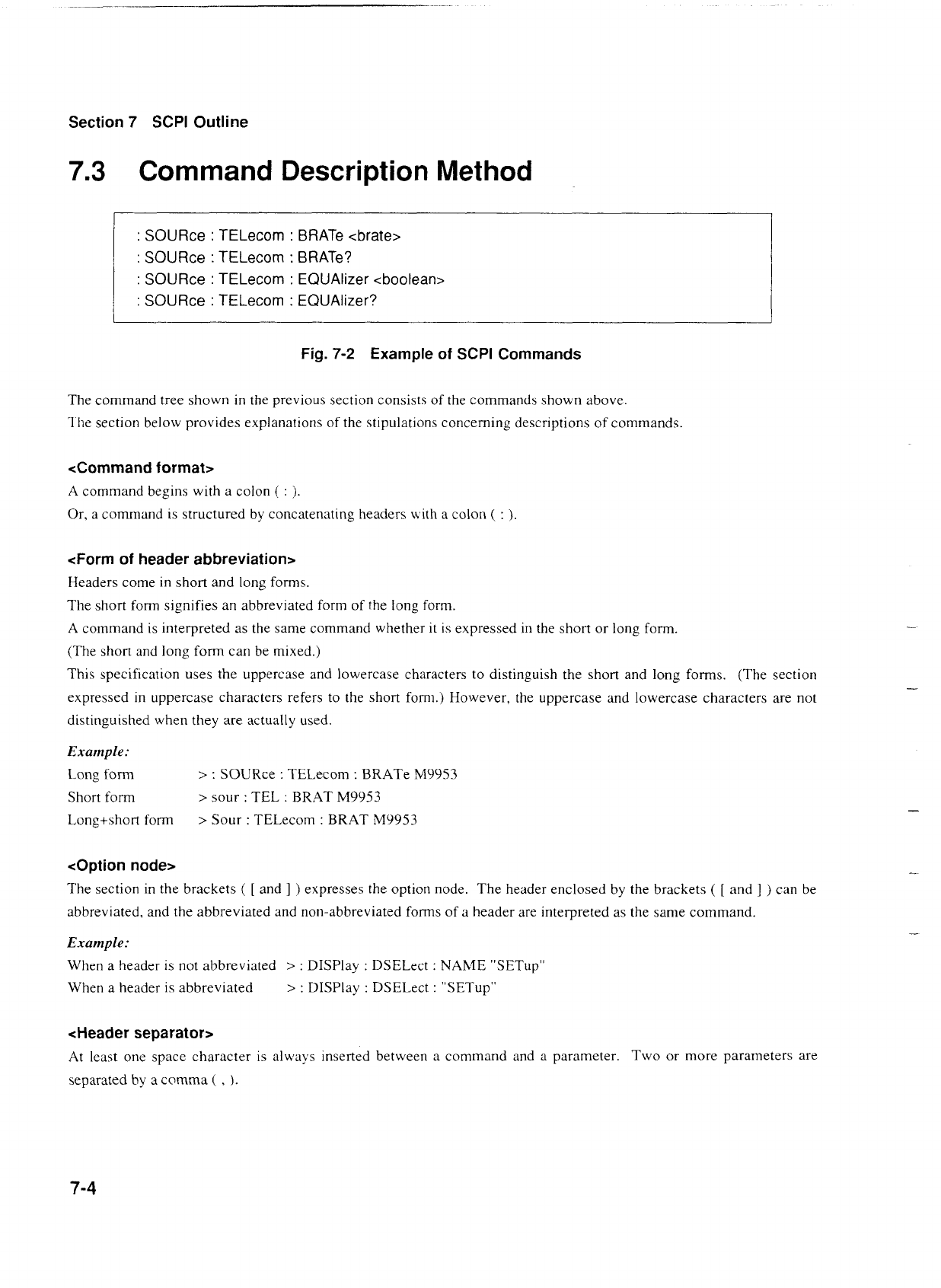
Section
7
SCPl Outline
Command Description Met hod
:
SOURce
:
TELecom
:
BRATe ~brate>
:
SOURce
:
TELecom
:
BRATe?
:
SOURce
:
TELecom
:
EQUAlizer <boolean>
:
SOURce
:
TELecom
:
EQUAlizer?
Fig.
7-2
Example of SCPl Commands
The command tree shown in the previous section consists of the commands shown above.
The section below provides explanations of the stipulations concerning descriptions of commands.
<Command format>
A command begins with a colon
(
:
).
Or, a command is structured by concatenating headers
n
ith a colon
(
:
).
<Form of header abbreviation>
Headers come in short and long forms.
The short form signifies an abbreviated form of the long form.
A
command is interpreted as the same command whether it is expressed in the short or long form.
(The short and long form can be mixed.)
This specification uses the uppercase and lowercase characters to distinguish the short and long forms. (The
expressed in uppercase characters refers to the short foml.) However, the uppercase and lowercase characters
distinguished when they are actually used.
section
are not
Example:
Long form
>
:
SOURce
:
TELecom
:
BRATe
M9953
Short form
>
sour
:
TEL
:
BRAT
M99.53
Long+short form
>
Sour
:
TELeconi
:
BRAT
M9953
The section in the brackets
(
[
and
]
)
expresses the option node. The header enclosed by the brackets
(
[
and
]
)
can be
abbreviated, and the abbreviated and non-abbreviated forms of a header are interpreted as the same command.
Example:
When
a
header is not abbreviated
>
:
DISPlay
:
DSELect
:
NAME
"SETup"
When a header is abbreviated
>
:
DISPlay
:
DSELect
:
"SETup"
At
least one space character is always inserted between a command and a parameter. Two or more parameters are
separated by a comma
(
,
).


















